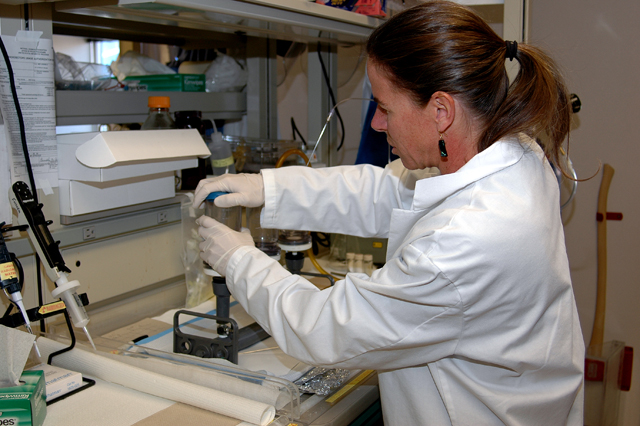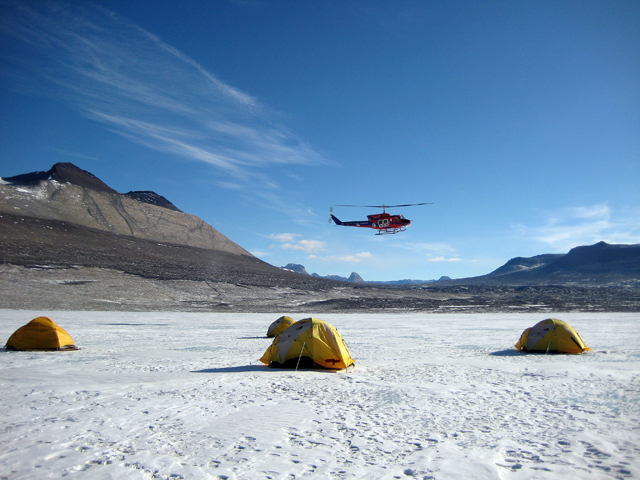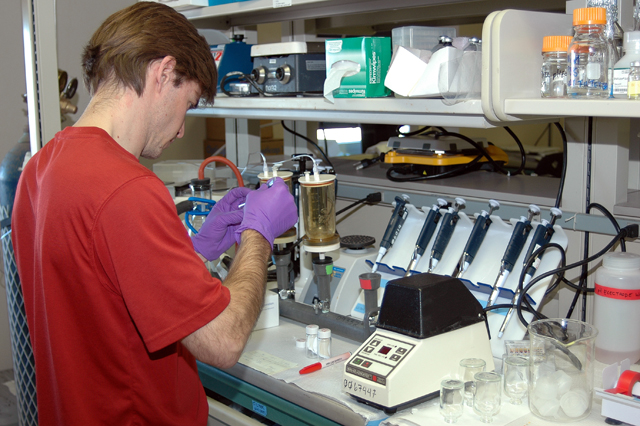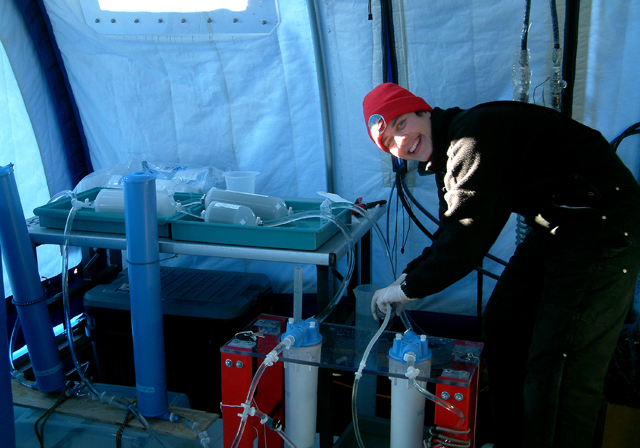Page 2/3 - Posted March 11, 2011
Running out of timeAs the drill started to chew deep into the ice cover, a strange thing happened. Liquid brine began to fill up in the hole, well above where the GPR survey had identified the liquid water layer. Brine channels that run through the lake started pouring into the borehole. The team pumped the brine out of the hole to analyze later and continued to bore down. Unfortunately, time worked against them. A late start meant the researchers found themselves in the middle of the lake as the summer melt season began. The meltwater from nearby glaciers doesn’t flow into the frozen lake but pools on top. “We were anticipating that we were going to get flooded out within a week, so we called it and closed the camp,” Murray said. The lake surface flooded about three days later. Characterizing the brineThe researchers had to be satisfied with characterizing the brine, which was “quite unusual,” according to Murray. The unusual chemistry somewhat resembles that found in the equally bizarre feature known as Blood Falls, where a subglacial pool of water under the Taylor Glacier in the Taylor Valley percolates to the surface of Lake Bonney. The iron oxide-enriched saltwater stains part of the face of the glacier red, as well as the ice-covered surface of the lake nearby. [See previous article: Ancient microbes.] And while Lake Vida isn’t the saltiest body of water in the Dry Valleys — that honor goes to Don Juan Pond, which also has high levels of the laughing gas called nitrous oxide — the salts are sodium chloride, probably residuals of marine-derived aerosols. [See previous article: No laughing matter.] The brine also contained high levels of iron and manganese, probably derived from the nearby rocks. Bacteria cell counts were also surprisingly high, particularly of a small cell type that Murray said the team didn’t “know anything about.” A weird dayThose enticing results brought them back in 2010-11 on a NSF-Supported project to take another shot at the liquid layer below the ice, intrigued by the clues found in the brine from the upper ice layers. “We’re really delving into the things that we found interesting last time,” Murray said. Drillers with the Ice Drilling Design and Operations By mid-November, the drill breached the 20-meter-mark. Then 21 meters, 22 meters … Layers of ice mixed with layers of frozen sediments, which made the drilling difficult. Driller Jay Kyne, wearing a white Tyvek suit to avoid contaminating the equipment, kept stopping to sharpen the drill blades, eventually calling back to McMurdo Station for another set of cutters. Twenty-three meters, 24 meters … Still no water even at 27 meters. The drill never dropped down as it should have if the drillers had penetrated a substantial water layer. “That was really quite a surprise,” Murray said of the lack of a brine pocket. “It was a weird day.” Filtering awayA few weeks later, back at the Albert P. Crary Science and Engineering Center in McMurdo Station It could be that the organisms are chemotrophs, using the chemistry of their environment to obtain energy, explained Brian Glazer “It’s better living through chemistry,” Glazer quipped. “They’re making sugars from the chemistry available to them.” Some of the experiments take hours to complete, partly because of the difficulty of working with the brine. It has to be kept in an anoxic environment; otherwise, it forms particulates that clog filters used in different experiments. One method involves keeping a steady stream of nitrogen over the filter. A less appealing process involves working in an oxygen-free glove bag, a plastic bubble with built-in gloves. “Even if we do manage to keep it anaerobic, there’s a large amount of dissolved organic matter in the brine, and it’s very sticky, and it also clogs the filters very rapidly,” Glazer said. Some of the work takes place in a freezer with a constant temperature of minus 10 Celsius to keep the brine as close as possible to its original environmental conditions. “It gives us as clear a picture as possible of what the brine really is” working in the freezer room, Glazer said.Back 1 2 3 Next |



For USAP Participants |
For The Public |
For Researchers and EducatorsContact UsU.S. National Science FoundationOffice of Polar Programs Geosciences Directorate 2415 Eisenhower Avenue, Suite W7100 Alexandria, VA 22314 Sign up for the NSF Office of Polar Programs newsletter and events. Feedback Form |





